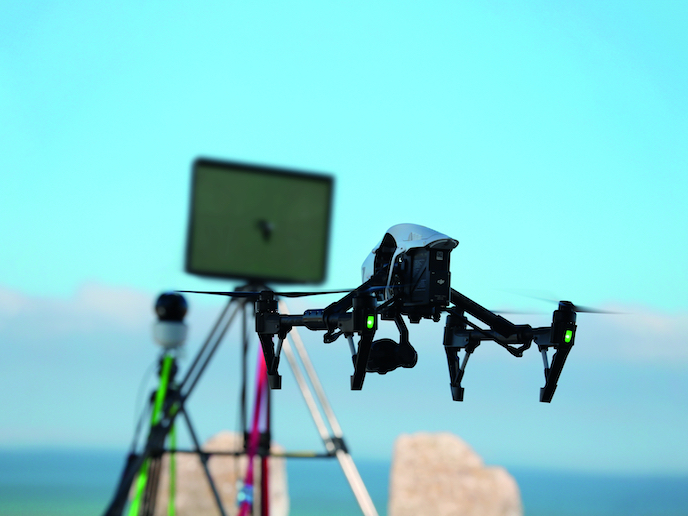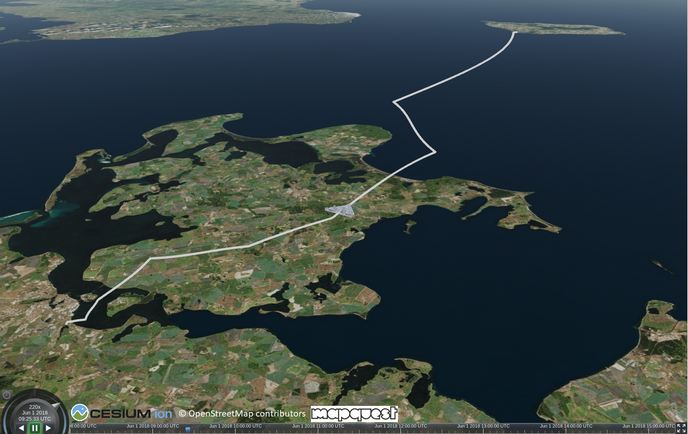Better detection of small aircraft and drones helps protect Europe’s maritime borders
Small manned aircraft and drones are increasingly favoured for smuggling illicit items, such as drugs, across borders. Their size and low-flying altitude make detection difficult, and they have ever-increasing reach and load capacities. Additionally, drones can be launched from small, offshore vessels after basic training. While aerial threats such as these are a global problem, in Europe they have become especially prevalent in the south coast of Portugal and Spain. Yet, conventional coastal surveillance systems, such as radar, are mainly designed to track vessels on the sea’s surface, not airborne vehicles. The EU-supported ALFA project has pioneered radar technology which detects and classifies Low, Slow and Small (LSS) aerial vehicles. Advanced information processing, including suspicious movements detection or analysis, is under development. This will assess the threat and also predict landing and drop zones, covering significant distances – a first for this type of technology. The system’s open architecture allows a range of additional sensors, such as LIDAR and acoustic sensors, to be integrated, making it both scalable and responsive to future needs.
Dynamic threat assessment
ALFA built on the successes of the SIVICC Coastal Surveillance System projects and SIVE(opens in new window), for Portugal and Spain respectively. Both demonstrated that a chain of specialist radars could detect sea vessels, almost irrespective of their size or speed. “These projects showed that virtually no ship could cross a sea border undetected. ALFA grew from the challenge of extending this capability to small, slow-flying aircraft,” says Klaus-Michael Koch, project coordinator. ALFA is broadly made up of three systems for: detection, analysis and display. Each active radar scanning sensor is designed to detect attributes specific to LSS aircraft. Using rotation signatures, ALFA can discriminate between aerial vehicles that are fixed wing, helicopters or drones. Cameras and time-of-flight technologies determine whether a target is moving or at close range, while also making identification easier. Radio frequency receivers capture the target’s location, along with its wireless communications. All the information gathered is combined in real time and then classified by the system’s modelling software, prior to suspicious movements detection or analysis which assesses the threat level to be presented to users, on PCs or mobile devices. The team were able to build their modelling software thanks to knowledge shared by some of the system’s end users – the Guardia Civil in Spain and Portugal’s Guarda Nacional Republicana.
An adaptable system
ALFA’s separate components were individually tested before the integrated system was trialled as a whole, in a dedicated virtual environment. A final demonstration was held in Cacela Velha, Portugal, for 60 representatives from law enforcement agencies and local technicians. “ALFA was demonstrated to security specialists, and these potential end users validated our unique integrated platform as suitable for their needs,” says Koch. In June 2019, ALFA was also presented to 20 security force participants from nine EU Member States, at the annual meeting of the European Border and Coast Guard Agency(opens in new window), known as FRONTEX. As ALFA’s open architecture can exchange data with different systems, it will be interoperable with both SIVE and SIVICC, as well as other systems, such as the French SPATIONAV(opens in new window) and the EU EUROSUR(opens in new window) system. ALFA could also protect critical infrastructure (e.g. airports) or large-scale events, so was presented at CETSE(opens in new window), the Spanish Security Technological Centre, last year. But it isn’t just security applications that can benefit from the new system, it can be adapted to monitor environmental activities such as the seasonal migration of birds. The team are currently working towards a fully functional prototype as the basis for a commercial product. Once enough data has been added, deep learning and AI algorithms will predict probable landing sites, drop zones and routes. With the right sensor configuration, warning times will also be adjustable by users.







